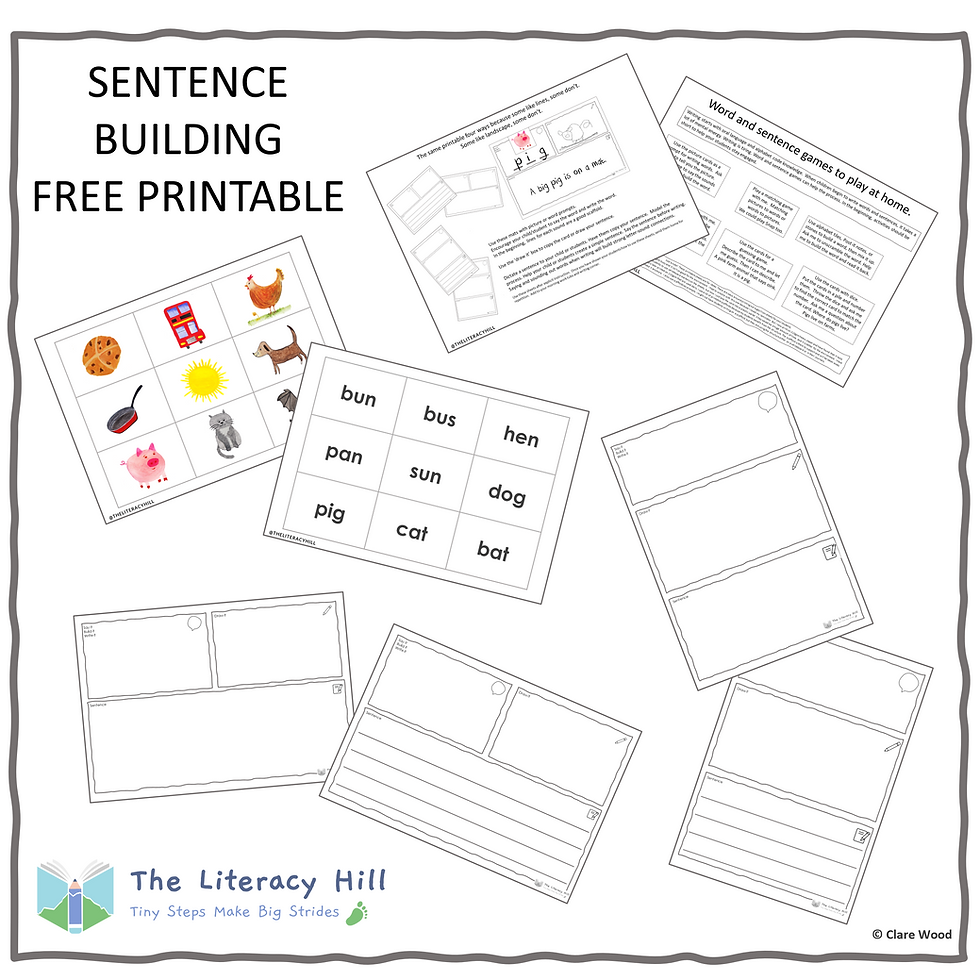5 WAYS WITH DECODABLE SENTENCES
- Developers Devzmelbourne

- Sep 5, 2022
- 4 min read
A sentence is only decodable if the student reading the sentence has had previous exposure to the sounds and spellings in the sentence. One of the biggest challenges in early reading instruction is to get your students decoding through knowing the sound-symbol correspondences instead of encouraging guessing.
If students fall into the habit of guessing, missing the word or using just the initial sound, they wander down an avenue that ultimately becomes a dead end. These habits are hard to break and initially can make a student or parent think they are a reader.
Choosing appropriate word lists, sentences, passages, and books is part of the long game.
Decodable sentences and texts don’t work by magic or have overnight success. But used in conjunction with explicit phonics instruction and later explicit spelling instruction, these texts set the right conditions for students to flourish and become fluent readers.
Decodable texts should be written with a controlled vocabulary using only the sounds, spellings and high-frequency words previously taught. As students learn more about how the alphabet code works, the complexity of the text should change.
Choosing decodable texts that closely align with your scope and sequence will enable students to practise and apply their newfound knowledge and skills. Decodable texts are a bridge to fluency. The end goal is automatic, fluent reading that supports students in choosing whatever book intrigues them.
As Stanislas Dehaene points out in his book, Reading in the Brain:
“There is no point in describing the delights of reading to children if they are not provided with the means to get there.” Pg 219
Students need lots of decoding practise. Decodable text can come in many forms, not just a book. In the clinic, I use a variety of word lists, sentence strips and passages to engage students in rereading various material in different ways. In the beginning, my students read sentence strips until they have the skills and knowledge to move on to little decodable books. This supports their increasing knowledge and skill in the foundation stage. A whole book can be daunting at first!
Using a variety of decodable texts lets us move in small cumulative steps before making a big stride in development. All the tiny steps taken week upon week eventually help the across the bridge to a fluent future.
Here are 5 ways we use decodable sentences in my clinic
Read and Draw
Once we have read the colour-coded sentence strips together, we use the mat to reread the sentence before writing it. This also provides the opportunity to discuss unknown words and meaning.

We also use read and draw grids. This is not art class! The picture making is a scaffold for a conversation. The discussion about the sentence matters. This discussion with an adult will fuel vocabulary development and comprehension as the pictures are created together.
Children need lots of repetition to build their skills to become fluent readers. Playful activities that make conversation will help engagement.
Word Sorts

Repeated reading is a brilliant strategy to support fluency. The thing is, it doesn’t excite all children after reading. Use a word sort activity as the reason why a text or decodable sentences must be read again. Go on a sound hunt or spelling hunt and use transparent counters or highlighters to mark the words before writing them into a sort it grid. Discuss the spellings as you sort the words.
Play a Game

My decodable sentences come in strips and cards. This is because it is an easy trick to get students to reread connected text quickly and easily. The use of cards and a track game instantly adds an element of fun. Track games and sentence cards are also great homework activities to play with a family member.
Expanding Sentences
After reading sentences, expand the sentence by using conjunctions. This way, you combine phonics instruction with writing instruction. Initially, when teaching about conjunctions, we use Post-it notes or cards with just one or two conjunctions.

Once my students know what to do and how to use conjunctions, we then move on to using conjunction activities. We love to add conjunctions to a cube for use with a track game. A game provides the right setting to discuss if the conjunction can be used to add extra information — if not, we discuss which conjunction is the best fit. We also use this conjunction board so my student can choose the conjunction that fits best to extend the sentence.
Dictation
My decodable sentences are the perfect bank of sentences to use for dictation to assess a student’s sound-spelling knowledge after explicit instruction informally. The sentences can be shortened or added to depending on the student’s needs.
Decodable sentence strips are a brilliant resource when teaching, reviewing and consolidating alternative spellings of the alphabet code.
All students need lots of repetition to decode words to read and retrieve spellings to write automatically. Sentence strips are also a cost-effective resource to send home so students can review the target sound-spellings previously taught. My students get a weekly home pack to use in between sessions that contain decodable resources that fit with the current session and retrieval practice resources that support their using and applying skills and knowledge from previous sessions.
Head over here to read a post all about first sentence building and grab a free first sentence building pack.

Check out my sentence packs.
First sentences- initial sounds

Vowel sounds and spellings

Consonant sounds and spellings

My sentences and printable resources are a time saver. My mission is to support all teachers and parents with evidence-based practical, easy to use resources so that your time is better spent teaching your students at their point of need.
In term 3 all sentence packs will be available in a variety of common school fonts.







Comments